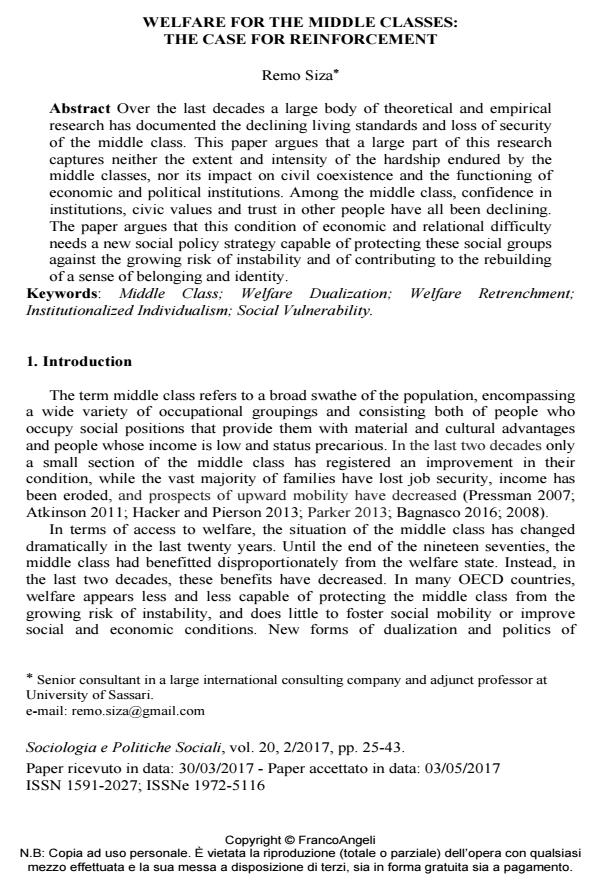Welfare for the middle classes: the case for reinforcement
Titolo Rivista SOCIOLOGIA E POLITICHE SOCIALI
Autori/Curatori Remo Siza
Anno di pubblicazione 2017 Fascicolo 2017/2
Lingua Inglese Numero pagine 19 P. 25-43 Dimensione file 197 KB
DOI 10.3280/SP2017-002003
Il DOI è il codice a barre della proprietà intellettuale: per saperne di più
clicca qui
Qui sotto puoi vedere in anteprima la prima pagina di questo articolo.
Se questo articolo ti interessa, lo puoi acquistare (e scaricare in formato pdf) seguendo le facili indicazioni per acquistare il download credit. Acquista Download Credits per scaricare questo Articolo in formato PDF

FrancoAngeli è membro della Publishers International Linking Association, Inc (PILA)associazione indipendente e non profit per facilitare (attraverso i servizi tecnologici implementati da CrossRef.org) l’accesso degli studiosi ai contenuti digitali nelle pubblicazioni professionali e scientifiche
Over the last decades a large body of theoretical and empirical research has documented the declining living standards and loss of security of the middle class. This paper argues that a large part of this research captures neither the extent and intensity of the hardship endured by the middle classes, nor its impact on civil coexistence and the functioning of economic and political institutions. Among the middle class, confidence in institutions, civic values and trust in other people have all been declining. The paper argues that this condition of economic and relational difficulty needs a new social policy strategy capable of protecting these social groups against the growing risk of instability and of contributing to the rebuilding of a sense of belonging and identity.
Parole chiave:Middle Class; Welfare Dualization; Welfare Retrenchment; Institutionalized Individualism; Social Vulnerability.
- In the midst of the COVID-19 pandemic: economic insecurity and coping strategies of Italian households Remo Siza, in International Journal of Sociology and Social Policy /2022 pp.298
DOI: 10.1108/IJSSP-07-2020-0326
Remo Siza, Welfare for the middle classes: the case for reinforcement in "SOCIOLOGIA E POLITICHE SOCIALI" 2/2017, pp 25-43, DOI: 10.3280/SP2017-002003